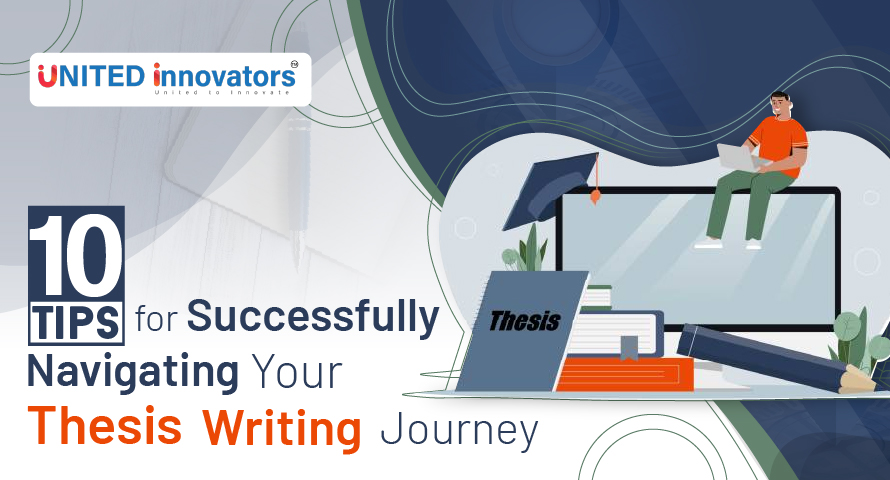A thesis is a crucial component of higher education, representing the culmination of years of research and dedication. As such, many students feel immense pressure to craft a perfect document. This article aims to provide lesser-known tips and tricks that can help streamline the thesis writing process and improve the overall quality of your work. By leveraging technology, embracing iterative writing, seeking unconventional resources, and employing other strategies, you can transform your thesis writing experience into a rewarding and productive journey.
- Tip #1
Leveraging Technology For A Smoother Thesis Writing Process
Voice-To-Text Transcription Tools
-
- Utilizing voice-to-text software like Dragon NaturallySpeaking or Google Docs’ voice typing feature can expedite the writing process, especially for individuals who may have difficulty typing or organizing their thoughts.
- This method can be particularly helpful for drafting initial ideas or overcoming writer’s block.
- Reference Management Software
- Managing citations and references can be a tedious task.
- Tools such as Zotero, Mendeley, or EndNote can help you store, organize, and automatically format citations according to the required style, saving you time and effort.
- Online Whiteboards & Mind Mapping Tools
- Visualizing your ideas and arguments can greatly improve your thesis’ structure and coherence.
- Websites and apps like Miro, XMind, or MindMeister allow you to create mind maps and flowcharts that can be easily shared with your supervisor or peers for feedback and collaboration.
- Tip #2
Establishing a Writing Ritual to Boost Productivity
- A well-established writing ritual can be instrumental in boosting productivity and ensuring steady progress throughout the thesis writing process.
- By fostering a sense of discipline, routine, and focus, you can overcome common challenges like procrastination and writer’s block.
- In this section, we will explore unique strategies and tips for creating an effective writing ritual that supports your academic success.
- Designing Your Ideal Writing Space
- Ergonomics
- Set up an ergonomic workspace to minimize discomfort and prevent strain or injury during extended writing sessions.
- Ensure that your chair, desk, and computer setup promotes proper posture and reduces eye strain.
- Minimizing Distractions
- Create a clutter-free environment and minimize distractions by muting notifications on your devices, using noise-canceling headphones, or employing website blockers to avoid social media temptations.
- Personalizing your space
- Personalize your writing area with items that inspire or motivate you, such as photos, artwork, or motivational quotes.
- This can help create a positive atmosphere conducive to productivity.
- Identifying Your Prime Writing Time
- Assessing Your Energy Levels
- Determine when you are most alert and focused during the day, and schedule your writing sessions during these peak times to maximize productivity.
- Experimenting With Different Times
- Test different writing times to find the optimal schedule that works best for your lifestyle and energy levels.
- You may discover that you are most productive during early mornings, late evenings, or even in short bursts throughout the day.
- Balancing Your Schedule
- Ensure that your writing routine is sustainable by balancing it with other responsibilities, such as coursework, employment, and personal commitments.
- Setting Realistic Goals & Deadlines
- Breaking Down Tasks: Divide your thesis into more minute, easy-to-manage tasks and set pragmatic deadlines for every milestone. This approach can help you maintain a sense of progress and accomplishment while preventing feelings of overwhelm.
- Adopting The SMART Goal Framework: Use the SMART criteria (Specific, Measurable, Achievable, Relevant, Time-bound) to set clear, actionable goals for your writing sessions. This will assist with staying immersed and motivated as you work towards your objectives.
- Adjusting Goals As Needed: Regularly review your goals and deadlines to ensure they remain realistic and achievable. Be willing to adjust your expectations based on your progress, feedback, and personal circumstances.
- Creating A Pre-Writing Ritual
- Engaging In Mindfulness Exercises
- Practice mindfulness exercises, such as deep breathing, meditation, or visualization, to clear your mind and enhance focus before you begin writing.
- Reviewing Previous Work
- Before starting a writing session, briefly review your previous work to reconnect with your ideas and arguments and establish a sense of continuity.
- Setting Intentions
- Begin each writing session by setting a specific intention or goal for that session, such as completing a certain number of words or addressing a particular section of your thesis.

- Tip #3
Following An Organized Writing Process
Implementing Techniques to Maintain Focus and Momentum
- Timeboxing
- Allocate specific time blocks for focused writing and breaks, creating a structured and disciplined approach to your writing sessions.
- The Two-Minute Rule
- A task that can be accomplished in two minutes or less, has to be executed immediately.
- This technique, derived from David Allen’s Getting Things Done method, can help prevent small tasks from piling up and distracting you from your writing.
- Accountability Strategies
- Use tools like online writing groups, progress trackers, or public commitment declarations to hold yourself accountable for achieving your writing goals.
- Developing A Thesis-Writing Routine
- Consistency is key to maintaining momentum and avoiding procrastination.
- Establish a daily or weekly writing routine, dedicating specific times and locations to your thesis work.
- This helps create an association between your writing environment and productivity, making it easier to focus.
- The Pomodoro Technique For Focused Writing Sessions
- This time-management method involves breaking work into short, focused segments (typically twenty-five minutes) followed by a short break.
- Using a timer to track your progress, the Pomodoro Technique can enhance concentration, reduce burnout, and make the writing process more manageable.
- Incorporating Physical Activity & Relaxation Techniques
- Regular exercise, meditation, or deep-breathing exercises can help reduce stress and improve cognitive function.
- Incorporate these activities into your writing routine to stay energized and maintain mental clarity throughout the thesis writing process.
Establishing an organized writing process is crucial for boosting productivity and maintaining momentum throughout the thesis writing process. By tailoring your writing environment, identifying your prime writing time, setting realistic goals, and employing focus-enhancing techniques, you can easily turn your thesis writing undertaking into a productive endeavor.
Tip #4
Embracing The Iterative Writing Process
Freewriting To Overcome Writer’s Block
-
- Freewriting involves writing without regard for grammar, spelling, or organization, allowing you to generate ideas and overcome writer’s block.
- Set a timer for 10-15 minutes and write continuously without editing or censoring your thoughts.
- You can later refine and organize these ideas into a structured thesis draft.
- Writing In Layers For Greater Clarity & Organization
- Instead of attempting to write a complete, polished draft from the outset, break the process down into smaller tasks.
- Start by outlining the main points and arguments, then expand on each section with additional details and evidence.
- This approach allows for clearer organization and lessens the pressure of creating a perfect draft.
- Employing The Reverse Outline Method
- After completing a draft, create an outline based on your existing content.
- This process, known as reverse outlining, can help identify gaps in your argument, redundancies, or areas that require restructuring, ultimately leading to a more cohesive thesis.

- Tip #5
Expanding Your Knowledge Base Through Unconventional Resources
Utilizing Podcasts & Videos For Alternative Perspectives
-
- Academic resources are not limited to articles and books.
- Podcasts and videos can provide unique insights and perspectives on your topic.
- Platforms like TED Talks, iTunes U, or subject-specific podcasts can broaden your understanding and provide fresh ideas for your thesis.
- Networking Through Academic Forums & Social Media
- Connecting with experts and peers in your field via academic forums, LinkedIn, or Twitter can lead to fruitful discussions, collaboration opportunities, and valuable feedback on your work.
- Join relevant groups, participate in discussions, and share your research interests to foster a supportive network.
- Participating In Webinars & Online Workshops
- Webinars and workshops hosted by universities, research institutes, or professional organizations can help you stay up-to-date on the latest developments in your field, enhance your research skills, and connect with fellow researchers.
- Many of these events are recorded and made available online, allowing you to access valuable content at your convenience.
- Tip #6
Strengthening Your Argumentation Skills
- The Toulmin Model Of Argumentation
- This model, developed by philosopher Stephen Toulmin, offers a framework for constructing persuasive arguments by breaking them down into six components: claim, grounds, warrant, backing, qualifier, and rebuttal.
- Applying the Toulmin Model to your thesis can help ensure that your arguments are clear, logically sound, and well-supported.
- Employing The Rogerian Approach In Thesis Writing
- The Rogerian approach, named after psychologist Carl Rogers, emphasizes understanding and empathy in persuasive writing.
- By acknowledging opposing viewpoints and finding common ground, this method can help you build rapport with your readers and create a more persuasive, balanced argument.
- Using Analogies & Case Studies For Persuasive Writing
- Analogies and case studies can help illustrate complex concepts, making your arguments more relatable and engaging.
- Use these tools judiciously to provide concrete examples, clarify abstract ideas, and lend credibility to your claims.
- Tip #7
Hacking The Review Process For Constructive Feedback
- Conducting A Premortem Analysis
- A premortem is a technique used to identify potential problems before they occur.
- Apply this method to your thesis by imagining that your project has failed and brainstorming the possible reasons why.
- This exercise can help you anticipate and address weaknesses in your work before submitting it for review.
- Creating A Peer-Review Circle
- Form a group of fellow students or researchers to exchange and review each other’s work.
- This collaborative process can provide diverse perspectives, constructive criticism, and mutual support, ultimately leading to improved thesis quality.
- Incorporating Feedback From Non-Experts
- Share your thesis with individuals outside of your field to gain insights on clarity, readability, and overall presentation.
- This can help ensure that your work is accessible and engaging to a wider audience.
- Tip #8
Mastering the Art of Visual Communication
- Visual communication plays a critical role in making your thesis more engaging, informative, and accessible.
- By effectively presenting complex data, ideas, and relationships through visuals, you can enhance the impact and clarity of your work.
- Detailed below are the various aspects of visual communication, providing unique insights and tips to elevate your thesis.
- Choosing The Right Visual Aid For Your Content
- Data Visualization Types
- Different types of data call for different visualization methods.
- Common types include bar charts, line charts, pie charts, scatter plots, and heat maps.
- Select the appropriate visualization based on your data’s structure, the relationships you want to highlight, and your audience’s familiarity with the format.
- Conceptual Diagrams
- Use flowcharts, process diagrams, or concept maps to illustrate relationships, hierarchies, or chronological sequences.
- These visuals can help clarify complex ideas and improve the overall flow of your thesis.
- Images & Illustrations
- Supplement your text with photographs, drawings, or other visual aids to provide context, enhance understanding, or evoke an emotional response.
- Ensure that all images are relevant, high-quality, and properly attributed.
- Design Principles For Effective Visual Communication
- Hierarchy
- Establish a clear visual hierarchy by prioritizing the most important information, using size, color, and positioning to guide the viewer’s eye.
- Hierarchy
- Balance
- Achieve balance in your visuals by evenly distributing elements, creating a sense of stability and harmony.
- Contrast
- Use contrast to emphasize key points and make your visuals more engaging.
- This can be achieved through variations in color, size, shape, or texture.
- Alignment
- Align visual elements to create a clean, organized, and professional appearance.
- Consistency
- Maintain a consistent visual style throughout your thesis, using a cohesive color palette, typography, and design elements.
- Optimizing Visuals For Digital & Print Formats
- Resolution & File Formats
- Ensure that your images and visual aids are high-resolution and saved in appropriate file formats (e.g., JPEG, PNG, or SVG) to prevent loss of quality in digital or print formats.
- Color Considerations
- Be mindful of color differences between digital and print media.
- Use the CMYK color model for print materials and the RGB color model for digital materials to ensure accurate color representation.
- Scalability
- Design your visuals to be scalable so they maintain clarity and legibility when resized for various platforms or print sizes.
- Enhancing Visual Accessibility
- Color-Blind Friendly Design
- Choose color combinations that are easily distinguishable for individuals with color vision deficiencies, such as using high-contrast colors or patterned fills.
- Color-Blind Friendly Design
- Text & Typography
- Ensure that all text within visuals is clear, legible, and large enough to read.
- Use sans-serif fonts for improved readability and avoid overusing italics or boldface.
- Providing Alternative Descriptions
- Include descriptive captions or alt text for images and visual aids to ensure accessibility for individuals with visual impairments or those using assistive technologies.
- Ethical Considerations In Visual Communication
- Accurate Representation
- Present data and information honestly and accurately, avoiding misleading visuals or manipulative design choices that could distort the truth.
- Accurate Representation
- Proper Attribution
- Always credit the original source of images, illustrations, or data visualizations used in your thesis, ensuring you have the necessary permissions to use them.
- Designing Clear & Concise Tables & Graphs
- Visual aids can significantly enhance your thesis by making complex data more comprehensible.
- Ensure that your tables, graphs, and charts are easy to read, accurately labeled, and consistent with your overall design.
- Utilizing Infographics For Complex Data
- Infographics can be an effective way to present large amounts of data or complex relationships in a visually appealing, digestible format.
- Experiment with different infographic styles and tools to find the best fit for your thesis.
- Ensuring Accessibility & Inclusivity In Visual Design
- Be mindful of accessibility and inclusivity when designing visuals for your thesis.
- Choose high-contrast colors, use clear and legible fonts, and provide alternative text descriptions for images to accommodate diverse readers.
- Mastering the art of visual communication is an essential skill for presenting your research in a compelling and accessible manner.
- By carefully selecting the right visual aids, applying design principles, optimizing for various formats, and ensuring accessibility, you can significantly enhance the impact and clarity of your thesis.
- Incorporating these unique insights and tips will definitely help you convey your insights in a more appealing and engaging manner.
- Tip #9
Embracing Open Science Practices for a Transparent Thesis
- Pre-Registration Of Research Studies
- Pre-registering your research plan and analysis strategy can help prevent biases and improve the credibility of your findings.
- By making your research intentions public, you demonstrate a commitment to transparency and reproducibility.
- Sharing Research Data & Materials
- Openly sharing your data, code, and materials can facilitate collaboration, enable other researchers to verify your outcomes, and contribute to the progression of knowledge within your discipline.
- Use platforms like the Open Science Framework, figshare, or Zenodo to share your research outputs.
- Engaging With Open Peer Review Platforms
- Open peer review, in which reviewers’ identities and reviews are made public, can foster transparency, collaboration, and constructive criticism.
- Platforms like Publons, PubPeer, or F1000Research provide opportunities to engage in open peer review, enhancing the credibility of your work and encouraging the exchange of ideas.
- Tip #10
Cultivating Resilience & A Growth Mindset During The Thesis Writing Process
- Embracing Challenges & Setbacks
- The thesis writing journey is often filled with challenges and setbacks. Instead of viewing these as insurmountable obstacles, embrace them as opportunities to learn and grow.
- Reflect on the lessons you can glean from each challenge and use them to refine your approach and strengthen your work.
- Developing A Growth Mindset
- A growth mindset, as opposed to a restricted, unmoveable mindset, emphasizes the belief that skills, know-how, and expertise can be developed through dedication and hard work.
- Cultivate a growth mindset by focusing on effort, learning from constructive criticism, and remaining open to new ideas and perspectives.
- This mindset can help you remain resilient and persistent throughout the thesis writing process.
- Celebrating Small Victories
- Acknowledge and celebrate the small milestones and accomplishments along the way, whether it’s completing a chapter, receiving positive feedback, or overcoming a particularly difficult obstacle.
- By recognizing your progress and rewarding your efforts, you can maintain motivation and sustain a positive attitude throughout your thesis journey.
The thesis writing process can be a challenging and rewarding experience. By leveraging technology, embracing innovative approaches, and refining your skills, you can enhance your productivity, improve the quality of your work, and navigate the process with greater confidence. The lesser-known tips and tricks outlined in this article, including the cultivation of resilience and maintaining a growth mindset, aim to provide a unique perspective on thesis writing, empowering you to take control of your journey and ultimately produce a standout piece of scholarly work.


